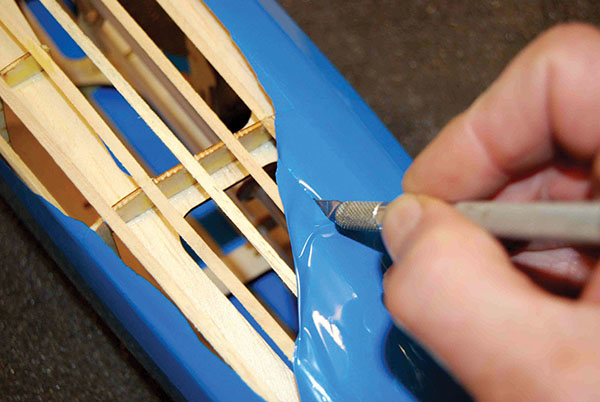
Written by Rob Caso | [email protected]
Scale Park Pilot
As seen in the Fall 2018 issue of Park Pilot
>> Author, designer, and AMA member Mark Frankel once remarked that RC scale modeling is the “pinnacle of the hobby.” I have always agreed with him. Scale modeling challenges you to replicate realism and it requires that a modeler become an expert in many areas, ranging from building and flying to history and detail.
Although I have always pursued the scale end of the hobby because of its diversity in both knowledge and skill, it can be a bit intimidating at the outset because the success bar is so high. And, at the end of it all, your model still has to fly.
I started in scale with full-build kits and gradually began to design my own models, but kits were all that were available at the time. Today, however, we have inexpensive and reliable electric power, laser-cutting, 3D design and printing, along with a greater variety of lightweight construction materials and ARFs.

The FMS Fw 190 with its modified, but not completely redone, camouflage.
I tell people that if I had to do it all over again, I would start with a scale model in an ARF format. All of the design and construction “heavy lifting” has already been done, allowing a modeler to focus on realism and functionality. Without having so much building time in this type of model, you can get to more of the scale features sooner, such as cockpits, weathering, painting, and details. It’s fun to make a cookie-cutter aircraft more of your own and different from all of the rest.
Although I noted that I like to design and build my own, I have done quite a bit with both foam and wood ARFs. I did a series of how-to videos for AMA a few years ago, where I demonstrated how to take a stock ARF and transform it into a representative scale model (modelaviation.com/scalemodeling).
Many of the ARFs are simply too good to ignore, and this allows you to do as much or as little as you want and still have a flyable, but realistic, model. Vince Nigrelli and I drove right back to my house a few years ago after attending the Westchester Radio AeroModelers Show (now AMA Expo East; amaexpo.com), where Vince picked up an FMS Focke-Wulf Fw 190 (fmsmodel.com).

Vince and Rob filled in nonscale panel lines underneath before completely repainting the aircraft.
We redid some of the scheme based on a full-scale aircraft that he liked and added more details such as guns, weathering, rivets, panel lines, and a properly mottled camouflage for which the Luftwaffe was famous. The markings were already applied to the model, so we masked some of them and simply painted around the rest. Although we really didn’t do much, the result was a startling difference from what we started with.

Flush rivets were burned into the plastic cowling with a brass tube in a soldering iron.
More recently, I grew tired of my wife asking me, “Whatever happened to the yellow and blue plane I got you?” It was an E-flite Stearman (horizonhobby.com). Okay, admittedly, it sat for a while, but my excuse was that I was noodling exactly what I wanted to do with it.
I went a little crazy on this one. Always preferring the Navy gray fuselage version and wanting to change other things on the model, such as relocating servos and adding full cockpits, I stripped off the fuselage covering and redid it in silver and gray. Doing this allowed me to bury control horns and trim the bulkheads that were poking the covering.

Removing the covering of the E-flite Stearman is surprisingly easy to do.
I was able to lighten the tail and I changed the markings, but I left the wing basically untouched. With the cockpits, full pilot, and paint scheme, the entire character of the aircraft changed, but it was still essentially the same model—which was nice to begin with.
The point in all of this is that you can get into scale without committing to a four-year project and still have a nice model airplane at the end. Conversely, you can do this in concert with your four-year project so that you have something to fly in the meantime that looks like an airplane.
Scale doesn’t have to be hard and, these days, it couldn’t be easier.

Vacuum-formed plates covering the cockpits were removed to facilitate the addition of complete cockpits.

A torso, arms, legs, and other details were added to a modified Williams Brothers (wmbros.com) pilot bust.

Vince Nigrelli focuses on the finishing touches of his FMS Fw 190.





